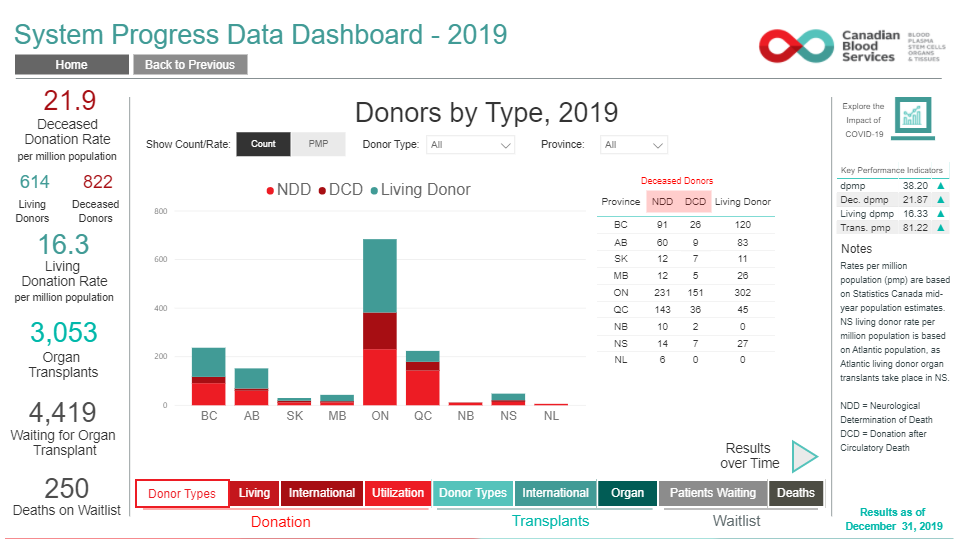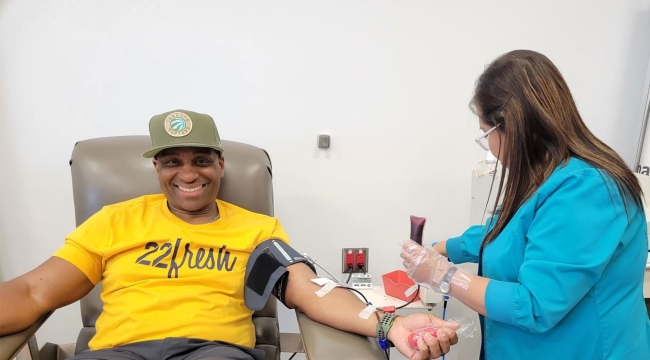Data offers hope to patients waiting for organ transplant
Family mourning loss of wife and mother hopes system improvements will help others
Two new reports offer signs of hope for patients in Canada who require an organ transplant.
Canadian Blood Services’ 2019 System Progress Data reveals an increase in the rate of organ donation after death. In 2019, there were 21.9 donors per million population, compared with 20.6 in 2018.This rate puts Canada on par with other high-performing countries such as Australia and the United Kingdom — a significant achievement. Equally notable is the degree to which the system uses each donor’s gift. Canada’s organ utilization rate is world class, with an average of three organs from every deceased donor being transplanted.
The latest data from the Canadian Organ Replacement Register (CORR), published by the Canadian Institute for Health Information (CIHI), also includes hopeful numbers. It reveals a total of 3,014 organ transplant procedures were performed in Canada in 2019, an increase of 42 per cent since 2010.
Sadly, the number of people who have died waiting for an organ transplant has increased. In 2019, 250 patients in Canada died, compared with 223 in 2018. And at the end of 2019, 4,400 patients were waiting for a transplant. There remains much work to be done.
‘I do not want any other families to lose their wives and mothers’
Michelle Pho of Regina, Sask. is one patient in Canada who died waiting for a transplant.
Michelle had suffered kidney damage from lupus, and she waited several years for a donor kidney before her death in 2018. Her widower Blaine Pho has become an advocate for system improvement.
“The wait time for patients can be very long and it is not unusual to wait many years before you get your donated organ,” says Pho, a father of two. “Unfortunately, as was the case with my wife Michelle, some people don’t get their donation and many others see their overall health deteriorate while they wait.”
According to CORR’s recent report, there were 40,734 Canadians (excluding Quebec) living with end-stage kidney disease (ESKD) at the end of 2019, an increase of 33% since 2010.* Like Michelle, many of those who need a transplant may not have a living donor, so will need to turn to a waiting list for a deceased donor. And while many provinces allow residents to register their intent to donate online, Saskatchewan’s online registry did not launch until fall 2020, after Michelle’s death.
“When I became aware that we were getting an online registry I was incredibly happy,” says Pho. “We cannot get Michelle back, but after living through this, I do not want any other families to lose their wives and mothers.”

Michelle Pho with her children, Emily and Carson. Michelle died in 2018 after waiting many years for a donor for a kidney transplant.
More living donors needed
Canadian Blood Services and donation and transplant programs across the country are also working to boost rates of living donation.
“Every patient who receives a kidney transplant from a living donor comes off the waitlist for an organ from a deceased donor. This shortens the wait-time for other patients on the transplant waitlist,” says Peggy John, acting director, Organ and Tissue Donation and Transplantation at Canadian Blood Services.
Learn more about living donation
Increasing awareness of organ and tissue donation and transplantation, and increasing the number of registered organ donors, is also part of a comprehensive system-wide approach to increasing donation rates.
“In 2019, Canada made great strides thanks to system-wide collaboration. The country relies on the generosity and cooperation of the clinical and professional community and many national and provincial organizations to continue to effect the positive change in donation and transplant rates,” says John.

Canadian Blood Services’ annual system progress data publication has been replaced by an online dashboard
One of the improvements is the ease of access and transparency of the System Progress Report itself. The information in this annual publication is now being delivered in the form of an online dashboard. This interactive online platform reports national performance data for organ donation and transplantation in Canada. The dashboard presents data on key aspects of the donation and transplantation across the system, giving system collaborators valuable insight.
Canadian Blood Services works with the Organ and Tissue Donation & Transplantation (OTDT) community to improve national system performance. Learn how to become an organ and tissue donor in your province or territory, talk to your family about your organ donation decision, and find out more about living donation.
*Canadian Institute for Health Information. Annual Statistics on Organ Replacement in Canada: Dialysis, Transplantation and Donation, 2010 to 2019. Ottawa, ON: CIHI; 2020
Canadian Blood Services works with the Organ and Tissue Donation & Transplantation (OTDT) community to improve national system performance. Learn how to become an organ and tissue donor in your province or territory to your family about your organ donation decision, and find out more about living donation.



